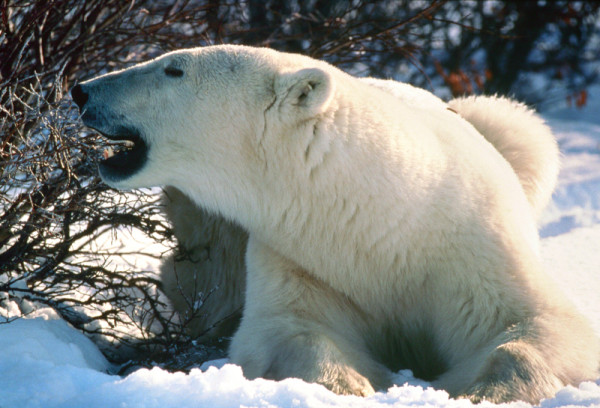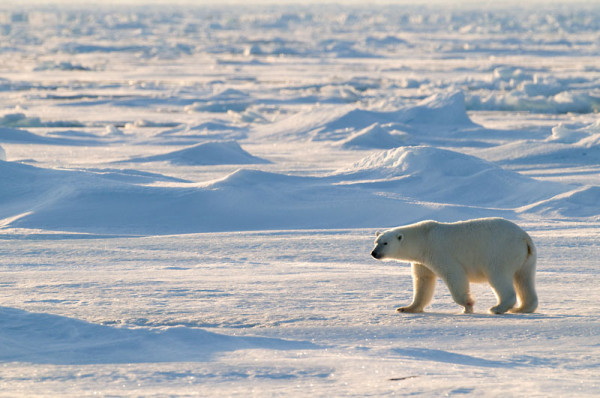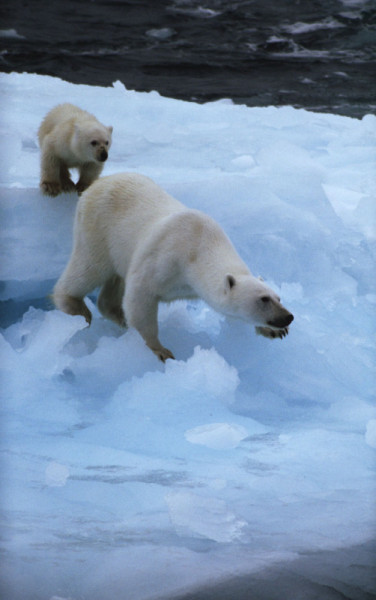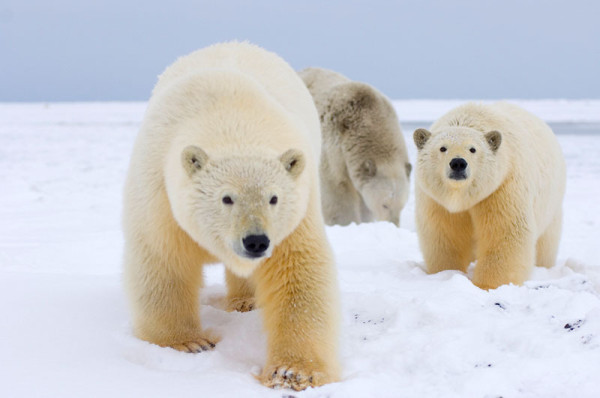Where the Bears Are
Too often, we tend to think of polar bears as a single, homogenous group, when there are actually 19 subpopulations – distinct groups that live in different regions and are monitored and measured separately. As these subpopulations live in different parts of the Arctic, they encounter unique opportunities and challenges based on their range.
However, these 19 subpopulations are spread across the territory of just five countries – Canada, Greenland (Denmark), Norway, Russia and Alaska ( U.S.A.) Here’s a quick guide to where the bears range and how they’re faring in each country – just in time for International Polar Bear Day today!

Canada: polar bear central
Canada is truly ‘where the bears are’ – at least, most of the bears. Some 60% of the world’s polar bears (known among Canada’s Inuit as nanuk or nanuq) spend the majority of their time in Canada. This includes the world’s southernmost polar bear subpopulation (Southern Hudson Bay, in Manitoba, Ontario and Quebec) and the world’s ‘Polar Bear Capital’ – Churchill, Manitoba, which has about 900 residents and nearly as many polar bears migrating through each fall.
Polar bears can be found across Canada’s northern territories – you can follow some of them on WWF’s Polar Bear Tracker – and are a central part of traditional northern culture. With the loss of sea ice, however, bears are spending more time ashore and interacting more with communities, putting both human and bear lives at risk. In Canada, WWF is working to help address this issue through partnerships with governments and communities like Arviat.

Greenland: home of Nanoq
Greenland’s 4,400+ polar bears are shared with Canada to the west. Although the population on the southern end of the island is increasing, those on the northwest are decreasing. Currently, little is known about the populations of northern and eastern Greenland. Scientists from Nunavut and Canada are working with the Greenland Institute of Natural Resources to survey polar bears populations that are shared between the two countries.
Polar bear populations in Northern and Eastern Greenland are surveyed by the Sirius Sledge Patrol – the only military dog sled patrol in the world. See a photo gallery of the patrol from National Geographic.
Norway: land of the Isbjørn
Norway’s polar bears live on the sea-ice in the Barents Sea region and come ashore to den and rest on Svalbard, a small group of islands at 77-81 degrees north, halfway between Norway’s mainland and the geographic North Pole. They number about 2,650 bears, part of Barents Sea subpopulation.
The Norwegian Polar Institute has monitored the health and populations of polar bears on Svalbard, Norway for over 40 years, providing invaluable insight into the changes they’ve experienced as the Arctic warms. On average, about 100 bears are tagged each year, with more than 1,000 bears marked since 1990. A number of female bears have also been fitted with GPS collars (males’ necks are larger than their heads, making collaring unproductive – they just fall off!), and you can follow some of those bears on WWF’s Species Tracker.

Russia: polar bear mystery
Little is known about Russia’s polar bear (beli myed-vyed) subpopulations. Experts estimate that roughly 3,000 bears may dwell in Russian territory (shared with Norway and Alaska), but they are the least studied subpopulations in the Arctic. Russia is, however, home to the ‘Russian Arctic’ national park, which protects over 14,000 km2 of habitat for polar bears, walrus and bowhead whales.
Like in Canada, northern Russian communities are experiencing increasing challenges with bears that are off the sea ice and hungry for longer. The Umky Patrol, or Polar Bear Patrol, is an innovative partnership between WWF and Russian Arctic communities to reduce conflict between polar bears and people, keeping both safe.

United States: declining populations
Alaska is home to two polar bear subpopulations: the Chukchi Sea, which is data deficient; and the Southern Beaufort Sea, which is likely declining. The Chukchi is one of the largest and least understood of all the Arctic’s polar bear subpopulations. The U.S. Fish and Wildlife Service and Russian authorities share joint management of this population along with Native peoples both in Alaska and in Russia. In 2010 and 2011, I joined a team of scientists working to learn more about the polar bears in this area, which has been dramatically affected by climate change. Preliminary results of that work have been surprising – polar bears here seem to be doing better than expected at present, are in good condition, and appear to have good reproduction.
The story just East in the Beaufort is less promising. Research has continued to indicate declining body condition in bears and declines in cub survival, all leading towards a lower population of bears over time. In 2010, I worked with a team of scientists that found that polar bears in Alaska’s Beaufort Sea are swimming longer distances to find food and habitat as their icy habitat melts. One bear the team tracked swam for nine days straight- something never documented before.

The Last Ice Area: a home for the future
As sea ice continues to melt, many of these subpopulations will find it difficult to get sufficient energy-rich food they need to thrive. That’s why WWF is working on the Last Ice Area – a resilient region of sea ice in the high Arctic of Canada and Greenland – that may offer polar bears a long-term safe home for the future. Support our work on this project by donating today and Coca-Cola® will match your donation dollar-for-dollar until March 15, 2014, to a maximum of $1 million USD (Canada and U.S. only) as part of the Arctic Home campaign.

